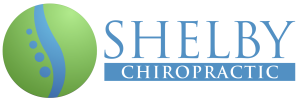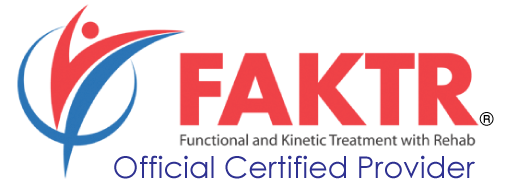During the last decade, the role fascia plays in regards to pain, loss of range of motion and altered function, has gained international attention. There are many manual soft tissue techniques designed to treat various musculoskeletal/soft tissue/fascial disorders. In addition to the manual forms of treatment, there are a growing number of instrument assisted soft tissue mobilization (IASTM) techniques as well. All of these techniques seem to play a role in bringing relief to those who suffer from the majority of these conditions.
History of FAKTR
FAKTR took shape approximately 10 years ago when Tom Hyde, DC and Greg Doerr, DC found their years of manual therapy training bring them together as instructors for Graston Technique®. While using Graston Technique® they decided to try treating conditions in non-static positions based upon their backgrounds in sports. This relationship led to the creation of FAKTR-PM (now FAKTR). This acronym stands for Functional and Kinetic Treatment with Rehab, Provocation and Motion. To break this down into a format that is easy to understand, here is a quick explanation of what each word means:
1) Functional – we are interested in what function someone is unable to perform. This could mean inability to sit, kneel, walk, reach, lift, run, get in and out of a car, throw or any other function or what is called the activities of daily living but this goes beyond just doing what is required during daily living into recreation, the work place and so forth.
2) Kinetic – following the works by Meyers, Stecco, Vleeming, Schleip and many others, treatment incorporates the kinetic chain and does not address the problem locally, but throughout the kinetic system.
3) Treatment – treatment can be rendered manually, with IASTM or both. The decision on which to use is left up to the clinician.
4) Rehab – treatment is rendered often with the use of rehabilitation equipment such as elastic bands, stability pads, TRX, physiobals, whole body vibration (WBV), the iJoyBoard, weights, body blades, flexbars, BOSU, perfect pushup, and virtually any piece of rehabilitation equipment from simple to complex.
5) Provocation – it has been our observation, as well as other FAKTR providers, that treatment in positions of provocation appear to expedite recovery. We also treat in both the eccentric as well as the concentric movement patterns but tend to focus with greater specificity to the eccentric phase.
6) Motion – motion may or may not be a part of the treatment. If pain is felt only at the end range, treatment is administered at end range of movement but, if pain, discomfort, tightness is felt through any portion or all of the range of motion (ROM), we treat through the ROM. There also might be times that pain cannot be provoked by movement alone but only with resistance, therefore, resistance might also be incorporated into the treatment.
This might sound complicated and time consuming but treatment generally takes between 5 and 15 minutes utilizing the FAKTR protocols.

